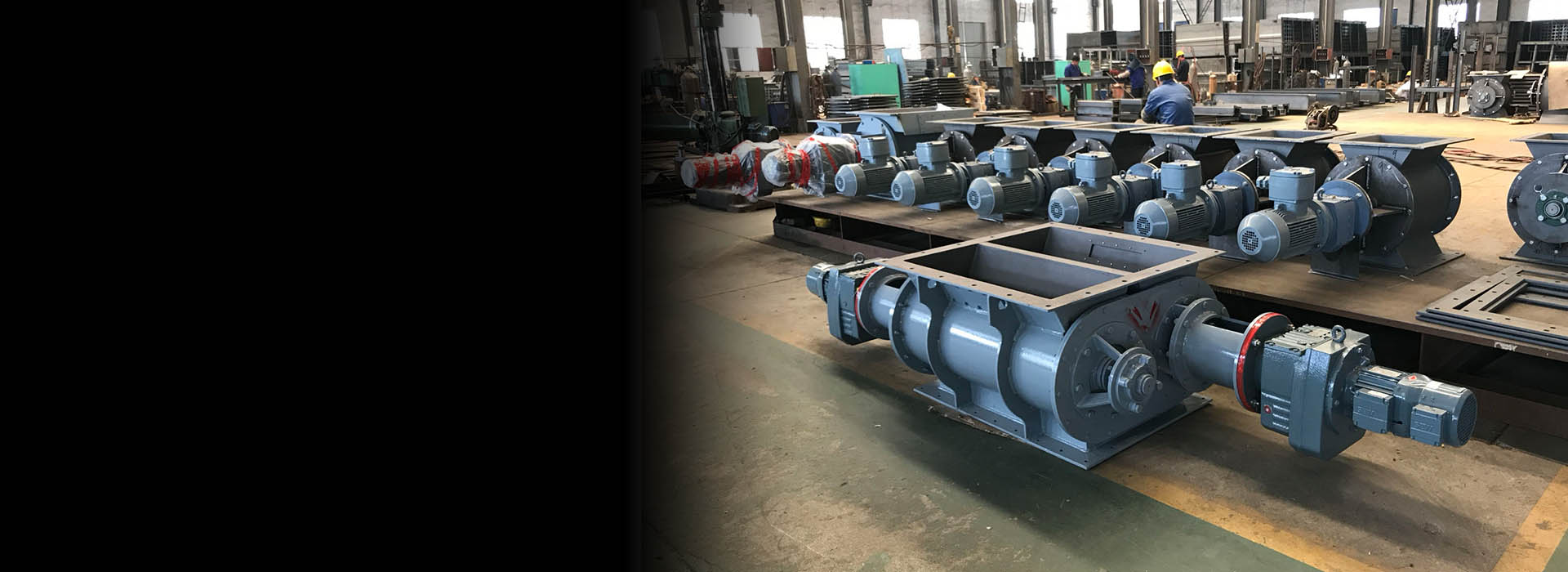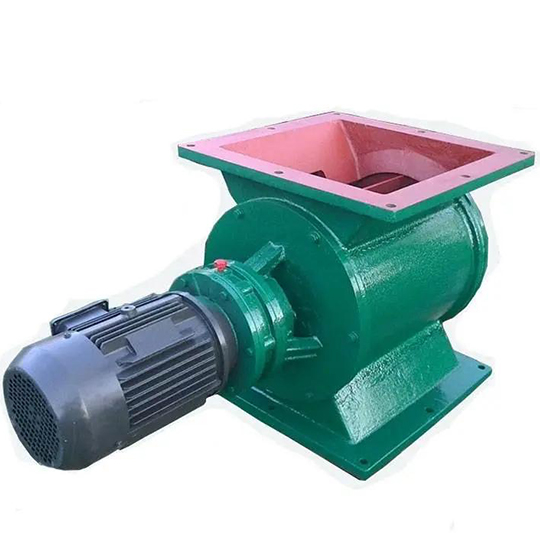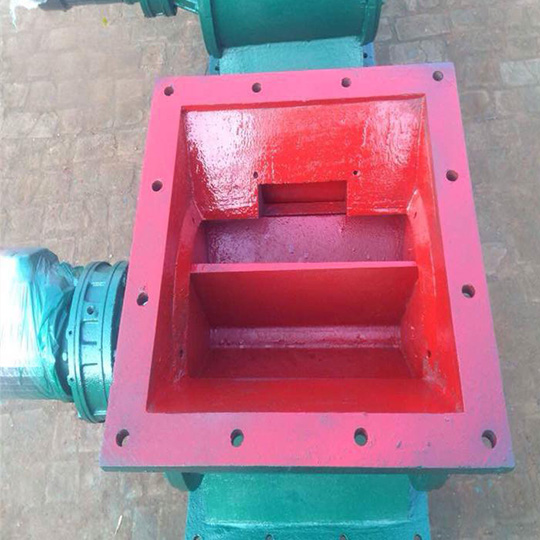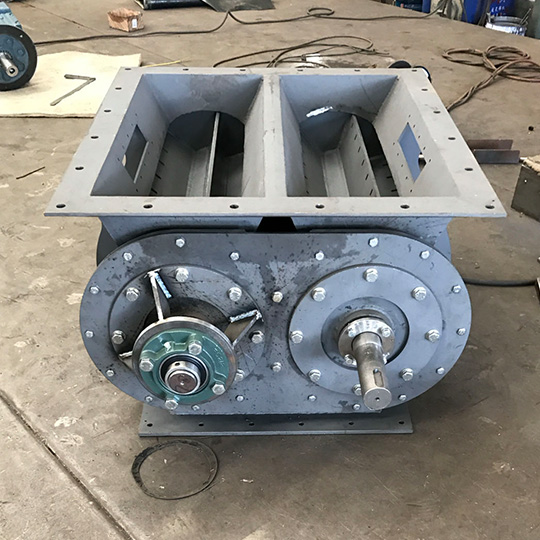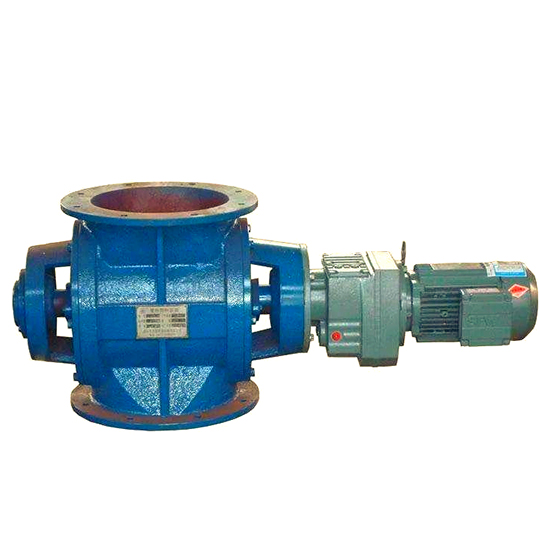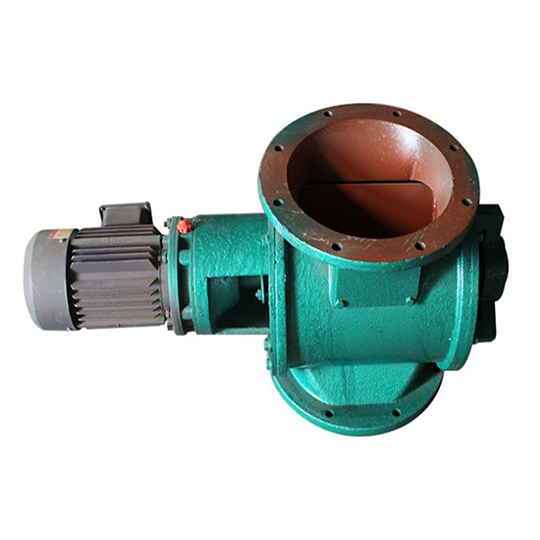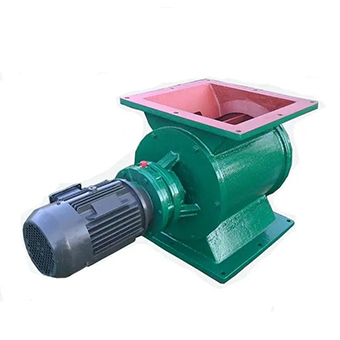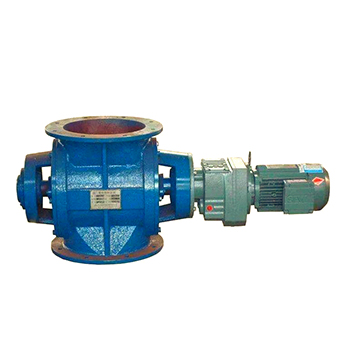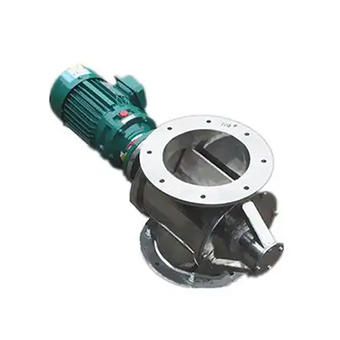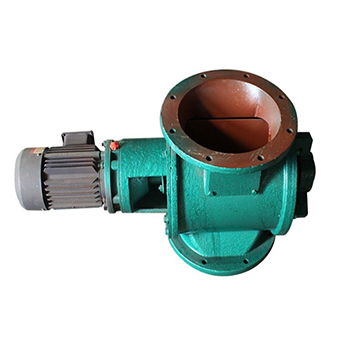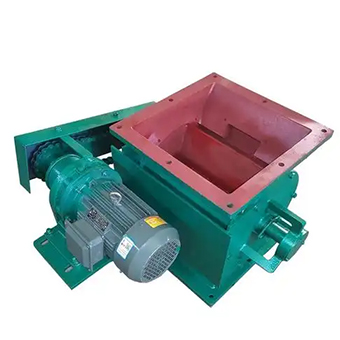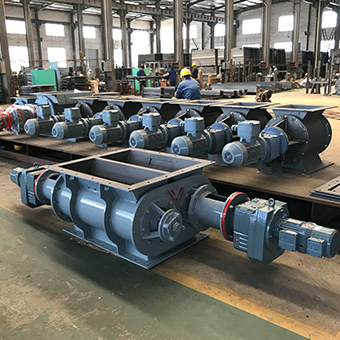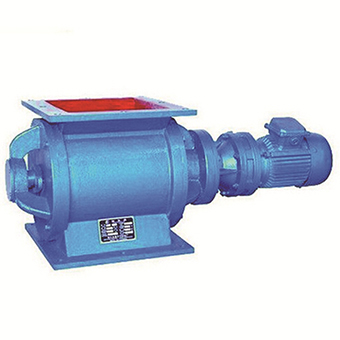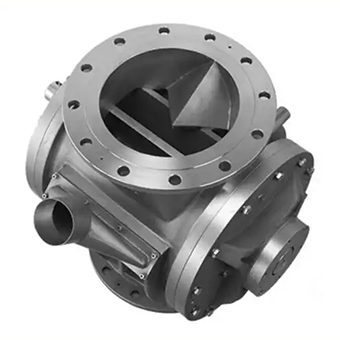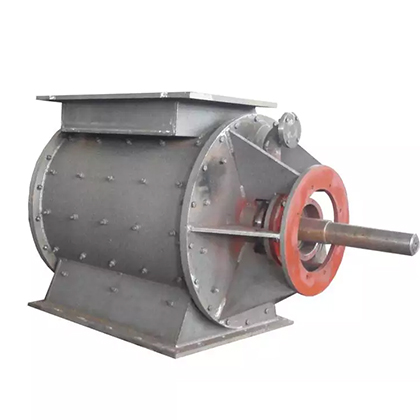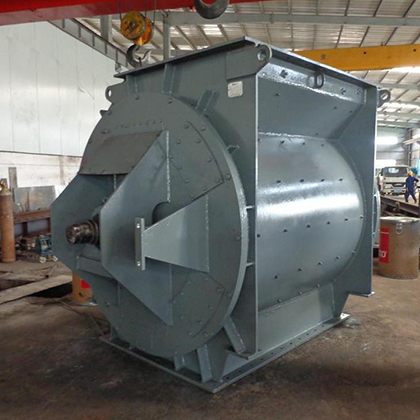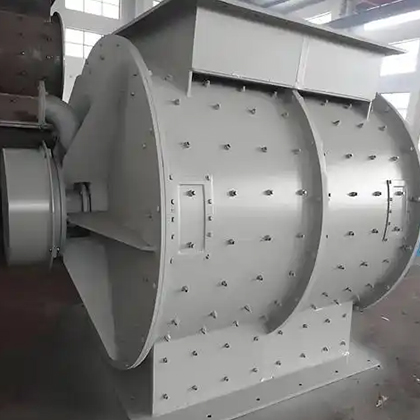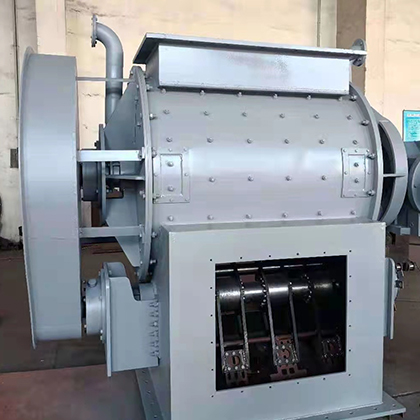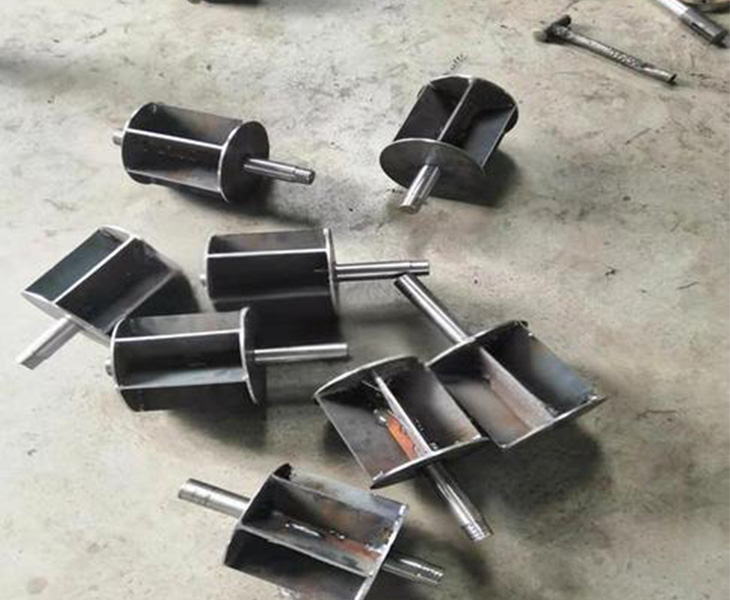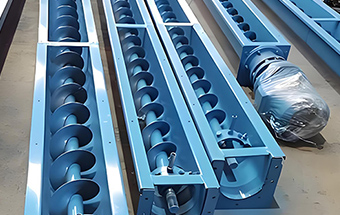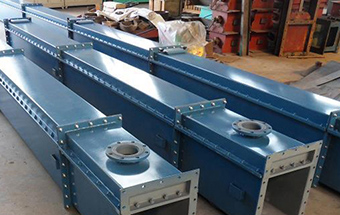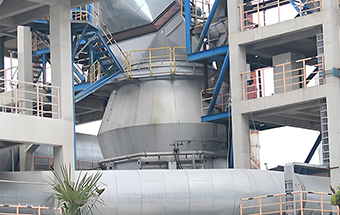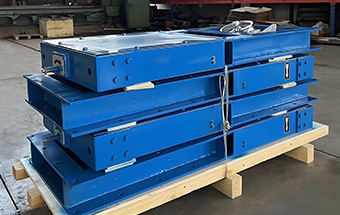Rotary valve for sale
Darko’s rotary valves are highly regarded as top-quality products in the plastics, chemical, food and minerals industries around the world.
We supply certified solutions for requirements regarding sanitary and flameproof design and ATEX conformity. Our rotary valves also set standards at high pressures and with regard to wear protection.
- Minimise pressure or air loss
- Provide metering and volume control
- Regulate feed rate
- Act as a flame or explosion barrier
Best rotary airlock valve manufacturers
With quality CNC-machining, NFPA compliance features and custom configurations for every application, our rotary airlock valves are the perfect match for your material processing needs.

What is a rotary valve?
Rotary valves are often referred to by various names (Airlocks, Feeders, Star Valves, etc.). Depending on the application, its function often dictates what it is called.
Rotary valves are made up of 4 main parts; housing, end-plates, rotor, and drive package. Darko’s rotary valves are made from cast gray iron, stainless steel and or Hard Chrome.
A rotary valve is simply a mechanical device used for the continuous discharge of bulk solid materials. The term ‘rotary’ is derived from the valve’s operating principle. During bulk material handling, the valve’s vanes rotate to produce a successful operation, hence, the term ‘rotary’.
The valve is an essential component in the bulk handling industry. Its main functions are to (i) regulate bulk material flow in the system and (ii) prevent air leakages, hence, maintaining constant air pressure in the system.
The rotary valve has two ports, the inlet port which serves as the bulk material entry point and the outlet port which serves as the bulk material exit point. During operation, the bulk material goes in via the valve’s inlet and is transported across the valve’s housing surface to the outlet by means of the rotor pockets as the rotor shaft rotates.
There are two types of rotations namely, the load side rotation and the return side rotation. The former is considered to be the rotation of the vanes and the pockets from the entry point to the exit point, while the latter is the rotation of the vanes and the pockets from the outlet to the inlet.
Regardless of the valve’s simple construction, it is adjustable to meet most industrial applications. An incorrectly used valve can lead to inadequate efficiency, equipment wear, accelerated product degradation, production loss because of process shutdowns etc.
Rotary Valve Types
Darko rotary valves come with the reliability of decades of experience, know-how and proprietary development, and manufacturing with top quality materials.
Used in conjunction with screw conveyors and chain conveyors for sealed discharge.
Compatible with square pipelines or hopper interfaces for easy direct installation.
Corrosion and heat-resistant stainless steel rotary valves.
The cast iron casing has high hardness, making it suitable for abrasive materials .
More impact-resistant, making it suitable for high-load or foreign object-laden conditions.
Suitable for high pressure differences (0.6 MPa) or flammable and explosive dust.
Explosion-proof design meets high-level standards such as ExdⅡCT4
Discharge highly abrasive powders from vertical mills and cyclone dust collectors.
Special Designs and Sizes up to 2000 mm
The design and manufacturing of rotary valves beyond the commonly used sizes and shapes is a challenge to many manufacturers. For those applications requiring large throughputs or handling large size particles, for example in chemical and aggregates industries, this is not the case for Darko.
-
Integrates features such as material sealing small chambers and forward/reverse control, supporting quick handling of abnormal operating conditions.
-
Bearings and gear reducers often use external or chain connections to isolate them from high-temperature materials, preventing dust intrusion and lubrication failure.
-
In response to the high negative pressure environment of vertical mills, a special sealing structure is used to ensure that airflow does not leak during material transport.
-
The casing is lined with a wear-resistant layer (eg. high-chromium alloy) and features an inclined feed inlet and curved blades to prevent large particles from getting stuck.
Enhance your business with Darko today!
By choosing Darko’s rotary valve you will get:

of your first order of Darko’s rotary valve, Darko ‘ll give you a 20% discount

of your first order of rotary valve, Darko ‘ll send you free seals

If you have a need for customized rotary valve, we also provide you with free design

If you buy Darko’s machinery, you will be provided with free technical support for life
Rotary Valve Rotor
One of the keys to any rotary airlock valve application is selecting the proper rotor for the intended service. This will make a significant difference in the overall life and performance of the rotary valve. Improper selection could result in accelerated wear, premature failure, additional downtime, reduced efficiency, increased maintenance, product degradation and possible loss of production.
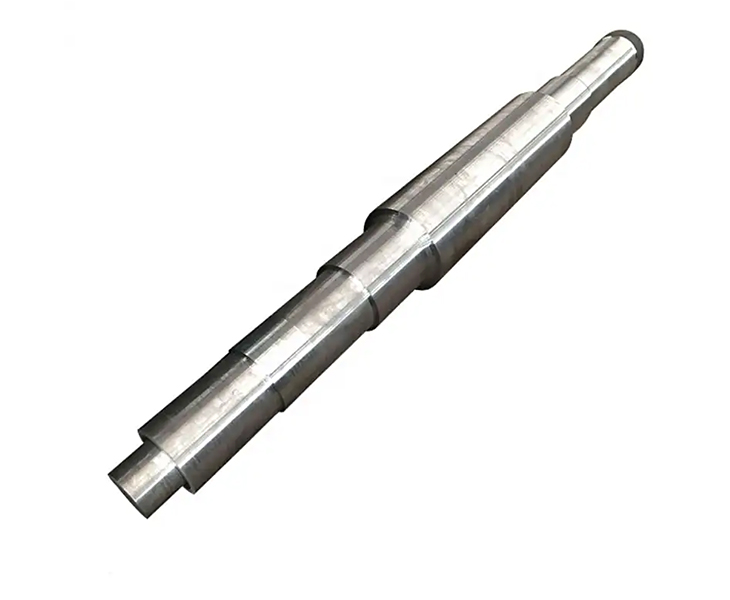
Rotary Valve Bearing
The outboard bearings allow smooth rotation of the rotor with minimal deflection. The bearings are outboard to the end plate. They are kept clean and free from foreign matter by factory deign. They are not exposed to product or heat with this design and are factory lubricated for the life of bearing.
Rotary Valve Seals
Rotatry valve seals are used to create an air tight seal around the shaft of the rotor. This prevents material from escaping around the shaft while it rotates. Fluoroelastomer (FKM) valve seals are highly resistant to high temperatures (up to 250°C) and exhibit strong corrosion resistance. They are suitable for high-temperature conditions in industries such as cement and metallurgy (e.g., kiln discharge systems) and can withstand acidic and alkaline media.
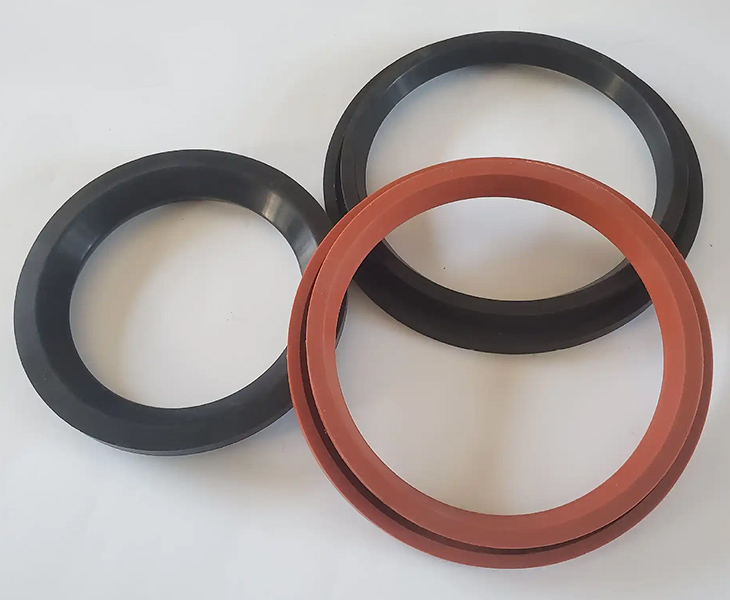
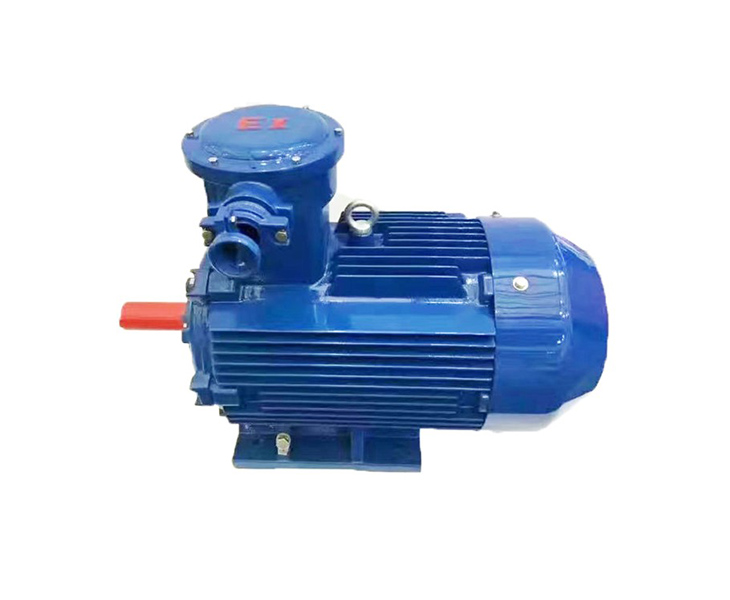
Rotary Valve Engine
The rotary valve engine mainly consists of a motor, a reduction mechanism, and a transmission system. The motor (typically a three-phase asynchronous motor or explosion-proof motor) reduces the speed and increases the torque through a gearbox (such as a planetary gearbox or cycloidal pinwheel gearbox). It then drives the impeller’s rotation via direct coupling, chain drive, or gear drive.
Best rotary airlock valves for bulk materials


- Uniform Feeding
The rotation of the impeller ensures a continuous and metered discharge of bulk materials, preventing pressure fluctuations in the system caused by pulsed feeding. This feature is particularly suitable for pneumatic conveying systems that require a stable gas-solid ratio. - Adjustable Flow Rate
Some models are equipped with variable-speed motors or frequency converters, allowing for precise adjustment of the rotational speed to accommodate different bulk material flow rates (such as cement, grains, etc.). The control precision can reach ±2%.
Rotary Valve's Technicals
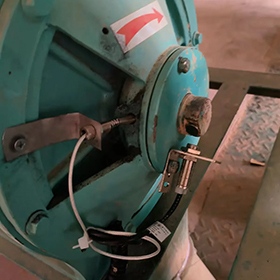
Thermocouples (K/S/B types) or PT100 resistance thermometers are installed at critical points of the rotary valve. The signals from these sensors are sent to the PLC using LoRa or ZigBee, which allows us to monitor the temperature of the rotating components in real time. This setup also supports 4-20mA output and Modbus-RTU communication, so it works well with DCS systems.
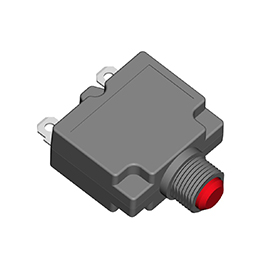
Rotary valves come with friction or ball torque limiters that automatically slip or disconnect the drive if the load goes over a certain limit. This helps keep the motor and gearbox safe from damage.
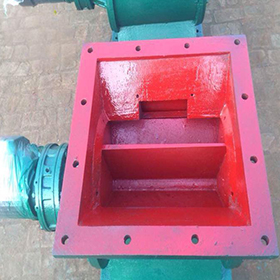
Darko’s rotary valve uses a variable frequency motor to adjust the speed. It automatically matches the optimal conveying speed based on the material density, helping to prevent overload and blockages.
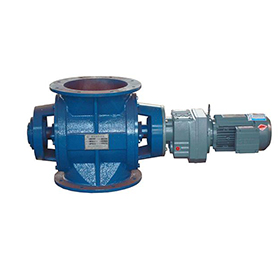
The rotary valve inlet is set off to the side instead of being directly centered. This helps larger particles get in more easily and reduces the chance of blockages.
Related Product
-
-
Using material bed grinding increases the fine powder proportion in extruded materials.
-
The groove-free design prevents blockages and is ideal for materials like ash and cement.
Why is Dakota’s rotary valves worthy of customer trust?
1. Reliability Assurance and Long-Term Operation
Harsh Environment Validation: Darko’s rotary valves are tested under high temperatures and heavy dust, the external bearing design prevents material contamination, ensuring smooth operation in extreme conditions.
Anti-Jamming Technology: The off-center design of the feed inlet allows for large particles to enter easily, reducing the risk of blockages and enhancing continuous operation.
Modular Maintenance: The design features inspection doors and replaceable liners, simplifying maintenance processes and minimizing downtime.
2. Comprehensive Service and Industry Reputation
Rapid Response Mechanism: We provide 24-hour technical support. Some manufacturers even offer free replacement of defective parts during the warranty period.
Proven Track Record: Our equipment has been successfully used in critical processes like vertical mills and rotary kilns in both domestic and international cement plants.
Training and Spare Parts Support: We offer free operational training and discounted spare parts supply to ensure a positive long-term user experience.
In industry, a rotary valve is used to regulate the flow of a product, usually to reduce the flow rate to a level more suitable to the process being undertaken. Often, applications do so between areas where gas pressures are different on the different sides of the valve.
Jamming is one of the most challenging problems with rotary valves. It occurs when the material gets caught between the rotor blades and the housing or head plates. Causes of Jamming: Large fibrous materials or hard materials like some plastic pellets.
Our rotary valves are very cost-effective among similar carts, not only are they better than most of the products in the market in terms of material and design, but we also provide customization options to help you better build your brand image.
Installing the rotary valve is usually straightforward under normal conditions. However, in special environments (like high temperatures or explosive settings), additional configurations are necessary. It’s recommended to choose the appropriate model based on the material characteristics and system requirements, and to strictly follow installation guidelines.



